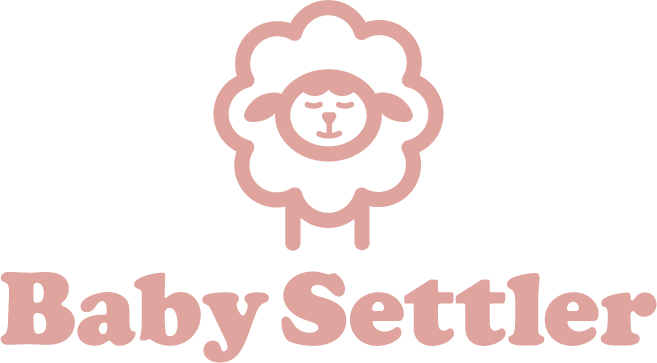
Baby Only Wants One Breast: Is it Normal and What Should I Do?
It’s perfectly normal for babies to only want one breast over the other. In fact, it’s more common than you might think. There are a few reasons why your baby only wants one breast, and there are a few things you can do to help baby get the nutrition they need. Let’s take a look at why baby might only want one breast, and what you can do about it.
What Causes Baby to Only Want One Breast?
One reason why a baby only wants one breast could be a low milk supply. If a mother’s milk isn’t sufficient for baby’s needs, they may only want to feed from one breast during each feeding. This might be because the milk is coming slower from that breast or because baby is trying to tell you that they’re not getting enough from the breast. Low milk supply can happen for a number of reasons— including improper latch or an underlying medical condition.
Another possible cause for only wanting one breast is infant sleep patterns. Many babies have a big drop in milk intake between the morning and evening feeds. This is usually due to them falling into a deep sleep after the morning feed and not wanting to wake up for the evening one. If you only have a small milk supply, this could also contribute to the baby wanting to feed from only one breast at a time.
When Baby Only Nurses From One Side
If your baby only wants one breast, it’s important to continue to offer both breasts at each feeding. If your baby consistently refuses one breast, try expressing milk from that breast and offering it to the baby in a bottle, cup or spoon. You can also try using a nipple shield on that breast, however, if using a nipple shield it’s important to find a lactation consultant to work with to address the underlying latching issue.
Here’s a quick tutorial on how to use a nipple shield.
It’s also normal for one breast to produce more milk than the other. You can try hands on compressions (massage) while your baby is nursing on that breast to help your baby trasnfer more milk. This may help the less productive breast to start producing more milk. It’s all about supply and demand. Alternatively, you can express milk from the slow breast and feed it to the baby in a bottle or syringe.
How to Know if Baby is Favoring One Breast
At each feeding, your baby will likely feed longer on the breast that he starts with. We recommend alternating starting sides. Check Your Position
If your baby is not wanting to latch onto one specific breasts it could be due to differing factors.
Correct positioning is important for maximizing milk extraction and comfort. There are a few different positions that are considered the best for breastfeeding. The most important thing is to make sure that the baby is latched on correctly, and that the mother is comfortable. Some common positions are the cradle hold, the cross-cradle hold, and the football hold. The position that is best for the mother and baby will likely be different for each pair, so it is important to experiment to find what works best. In general, it is important to make sure that the baby’s head is in line with the mother’s nipple, and that the baby’s chin is touching the breast. This will help to ensure a good latch and prevent the baby from slipping off the breast.
When your baby prefers to nurse from one breast, it makes sense to switch positions after each feeding from that side. Some mothers and babies do well switching sides vertically, i.e. mother grasps the breast close to the areola and lifts it to baby’s lips. Other mothers and babies prefer a horizontal switch, moving from the left to the right breast. Experiment with both positions and see what works for you and your baby.
If you’re struggling to establish equal feedings at both breasts, talk to your lactation consultant. They can check that everything is normal and offer advice on how to help you.

How to Prevent Engorgement on the Non-Preferred Breast
You can take a few steps to help prevent engorgement on the breast your baby doesn’t prefer. First, make sure you’re emptying both breasts at each feeding. If your baby consistently refuses one breast, express milk from that breast at each feeding either through pumping or by hand expression. This will help prevent engorgement. Also, be sure to comfort feed on the engorging breast. This means feeding with the breast slightly softened by milk expression or pumping. Do this for at least two to three feedings in a row to help relax the tissue and encourage let-down.
Other strategies to prevent engorgement on the non-preferred breast include avoiding letting the baby sleep for long periods of time on the non-preferred breast. You can also use a cold compress on the engorged breast. This will help reduce the swelling and make it more comfortable to nurse.
Strategies to Encourage Equal Feeding at Both Breasts
Some mothers find that their baby begins to feed more evenly at both breasts after they’ve adjusted their position and breastfed more forcefully. Others may need to adjust the timing of the feeding by starting with the less-preferred breast and working toward the favored one at the end of the feeding. Still, others may need to employ milk expression before each feeding, either from both breasts or from the less-favored one to help the baby open up that milk duct network.
Remember, breastfeeding is a skill that babies and mothers develop together. Even though you may feel like you’re not getting much milk at first, continued breastfeeding will strengthen your milk supply. Keep at it! With time, practice, and patience, you and your baby will figure out the best breastfeeding technique for you both.
For more sleep or lactation support, book a consult or find a course. We offer courses that cover breastfeeding, sleep (per age), pregnancy, and more. Try my Free Mini Course: Prepare for Birth with These Three Truths. More freebies and resources can be found here!




